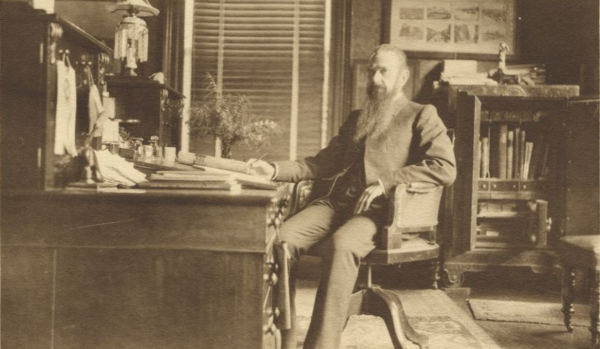The Curious Mr Stanford: from East Melbourne to California
Thomas Welton Stanford arrived in Melbourne in 1860 to make money. He achieved this by quickly securing the sole licence to import Singer sewing machines. But it is not for his business success that he is primarily known.
In 1869 he married Wilhelmina (Minnie) Watt, who less than a year later died in childbirth along with their daughter. Stanford, in his grief, turned to Spiritualism in the hope of communicating with her in the afterlife.
He was interested not only in the experience itself but also of authenticating it through science. Stanford was a foundation member of the Victorian Association of Progressive Spiritualists established in 1870 and which still exists as the Victorian Spiritualists Union Inc. The same year he helped establish the Harbinger of Light, a Spiritualist magazine.
In 1874 Stanford bought a house on a half-acre block in Clarendon Street, East Melbourne, now the site of the Epworth-Freemasons Hospital. He made considerable alterations and additions to it, including a fully equipped observatory.
In the early 1900s Stanford met Charles Bailey who appeared to have exceptional powers as a medium. Stanford sponsored weekly séances in a darkened room at his office on the SE corner of Bourke and Russell Streets, when all manner of objects, referred to as ‘apports’, would inexplicably appear among the guests. Bailey was eventually unveiled as a fraud but Stanford remained ever loyal to him. Bailey later made his way to England where he similarly swayed Arthur Conan Doyle.
In 1912 Stanford donated a large sum of money, and his collection of ‘apports’ to Stanford University, founded in 1885 by his brother, Leland. The money was to be used to establish a department of psychical research.
Stanford died at his home in 1918, and following up on his earlier donation he left his estate to Stanford University. In the words of Jonathan Fetter-Vorm in the Stanford Magazine, ‘Funds from Thomas Welton Stanford’s peculiar obsession propelled Stanford University to the forefront of modern psychological research.’
Stanford was often described as a lonely man but he found a good friend in William Crook, a young architect. Crook also lived in East Melbourne, on the corner of Simpson and Gipps Streets. The adjacent lane now bears his name. They likely met at the Fitzroy Bowling Club in the median strip of Victoria Parade where they were both members. Crook named his two children Welton and Minnie, and Stanford was Welton’s godfather. Crook followed Stanford into Spiritualism and later became Stanford’s accountant and personal secretary. Welton Crook studied at Stanford University where he rose to become professor of metallurgy. He too left his estate to the university, part of which was to endow a chair of Applied Earth Sciences, known as the Crook Professorship.
This article first appeared in the Inner City News of November 2024

